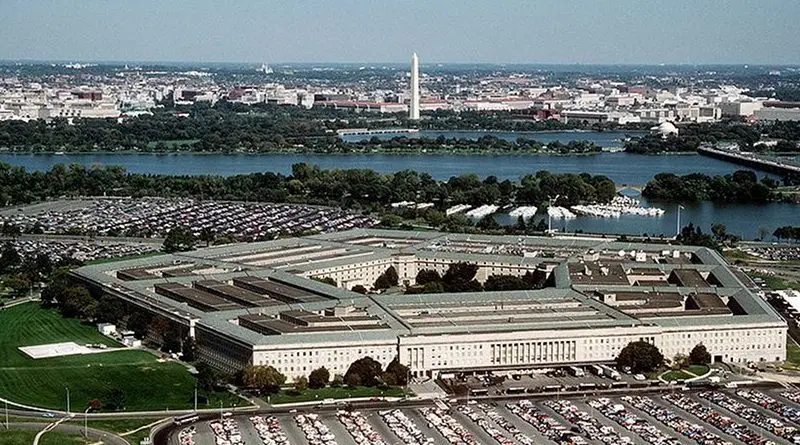Budget Balances Military Needs with Fiscal Restraint, Hale Says
By DoD News
By Lisa Daniel
The Defense Department’s $671 billion fiscal 2012 budget is a responsible funding request that balances the needs of the military with efforts to control federal spending, the department’s comptroller said today.
“We in the department need to be part of the deficit reduction plan,” Robert F. Hale said during a Pentagon news briefing to outline the budget. “This is a responsible budget that meets our national security needs and is sustainable.”
Under the proposal to Congress, total defense spending would decrease 6.6 percent, but the base budget — all funding except overseas contingency operations — would increase 0.7 percent to $553 billion.
Air Force Lt. Gen. Larry O. Spencer, director of force structure, resources and assessment for the Joint Staff, said the budget would not hurt military readiness. Spencer accompanied Hale to the briefing in place of Navy Adm. Mike Mullen, chairman of the Joint Chiefs of Staff, who is traveling.
“This budget ensures that our American military is ready to respond when the nation calls,” he said.
The budget allows the department to “consider the full spectrum” of global challenges, Hale noted, from the proliferation of weapons of mass destruction to terrorism to protecting free trade.
The budget freezes civilian cost-of-living raises, but gives service members a 1.6 percent increase to match the Labor Department’s annual Employment Cost Index.
The budget gives $8.3 billion to family support programs, including child care for more than 200,000 school-age children and funding of spousal employment programs. It also will allow for 15 modernization projects at department schools for service members’ children.
Department officials plan to spend $52.5 billion on health care, with increases to treating traumatic brain injuries and psychological health, as well as opening a new hospital on Fort Bliss, Texas.
Nearly $2 billion will be spent on construction, including 41 barracks, six fitness centers, four chapels and four child care centers.
For war funding, the budget provides about $85 billion to maintain readiness and training, partly due to the money saved from the drawdown in Iraq. It increases funding in intelligence, surveillance and reconnaissance capabilities to $4.8 billion, which includes procurement of more unmanned aircraft.
To improve weapons modernization, the budget would:
— Extend procurement of the F/A-18 aircraft through 2014;
— Stabilize shipbuilding with an 11-ship program;
— Procure a new long-range strike bomber with unmanned capability for the Air Force;
— Fund $.09 billion for the KC-X Tanker;
— Give $1 billion to the SSBN nuclear submarine development;
— Provide $10.7 billion to ballistic missile defense;
— and give $12.2 billion, a 2 percent increase, for science and technology research.
The budget reinvests $100 billion of $178 billion found in Defense Secretary Robert M. Gates’ “Efficiencies Initiative,” with the remainder taken as reductions from “top line” costs, such as $13 billion by freezing civilian billets, $12 billion with a two-year civilian pay freeze, $2.3 billion by closing Joint Forces Command and $8 billion in health care reforms.
As part of those initiatives, the Army will save $29.5 billion by reducing recruiting and retention incentives, terminating the Future Combat Systems and surface-launched advanced medium-range air-to-air missile, as well as reducing construction and manning and support processes.
The Navy and Marine Corps found $35 billion in savings by terminating the Corps’ Expeditionary Fighting Vehicle, using multiyear procurement contracts for new ships and aircraft, and reducing energy consumption.
The Air Force will reinvest $33.3 billion through reorganizations and consolidation; reducing, terminating and streamlining processes; as well as cutting information technology costs.
The budget decreases overseas contingency operations spending from $159 billion in the current year to $118 billion next year. Of that, $66.6 billion would go to operations, including $12.8 billion to train and equip the Afghan army and police. Nearly $12 billion would be for equipment reset costs.
Much of the decrease in the overseas budget is due to the drawdown of U.S. troops from Iraq, which is to be completed by the end of December. Expenditures in Iraq dropped from $46 billion in the current budget, which ends Sept. 30, to $11 billion to complete the transition to State Department operations in Iraq.
The department’s four-year budget plan calls for a 1 percent increase in the base budget in fiscal 2013, followed by 0.5 percent in 2014, and a flat budget in fiscal 2015 and 2016.

